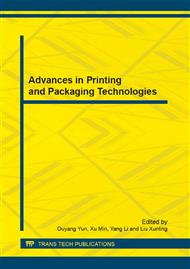p.138
p.143
p.147
p.152
p.157
p.163
p.168
p.172
p.177
Applied Research of Assessment Methods on Video Quality
Abstract:
With the rapid development of modern video technology, the range of video applications is increasing, such as online video conferencing, online classroom, online medical, etc. However, due to the quantity of video data is large, video has to be compressed and encoded appropriately, but the encoding process may cause some distortions on video quality. Therefore, how to evaluate the video quality efficiently and accurately is essential in the fields of video processing, video quality monitoring and multimedia video applications. In this article, subjective, and comprehensive evaluation method of video quality were introduced, a video quality assessment system was completed, four ITU recommended videos were encoded and evaluated by Degradation Category Rating (DCR) and Structural Similarity (SSIM) methods using five different formats. After that, comprehensive evaluations with weights were applied. Results show that data of all three evaluations have good consistency; H.264 is the best encoding method, followed by Xvid and wmv8; the higher the encoding bit rate is, the better the evaluations are, but comparing to 1000kbps, the subjective and objective evaluation scores of 1400kbps couldn’t improve obviously. The whole process could also evaluate new encodings methods, and is applicable for high-definition video, finally plays a significant role in promoting the video quality evaluation and video encoding.
Info:
Periodical:
Pages:
157-162
Citation:
Online since:
December 2012
Authors:
Keywords:
Price:
Сopyright:
© 2013 Trans Tech Publications Ltd. All Rights Reserved
Share:
Citation:


